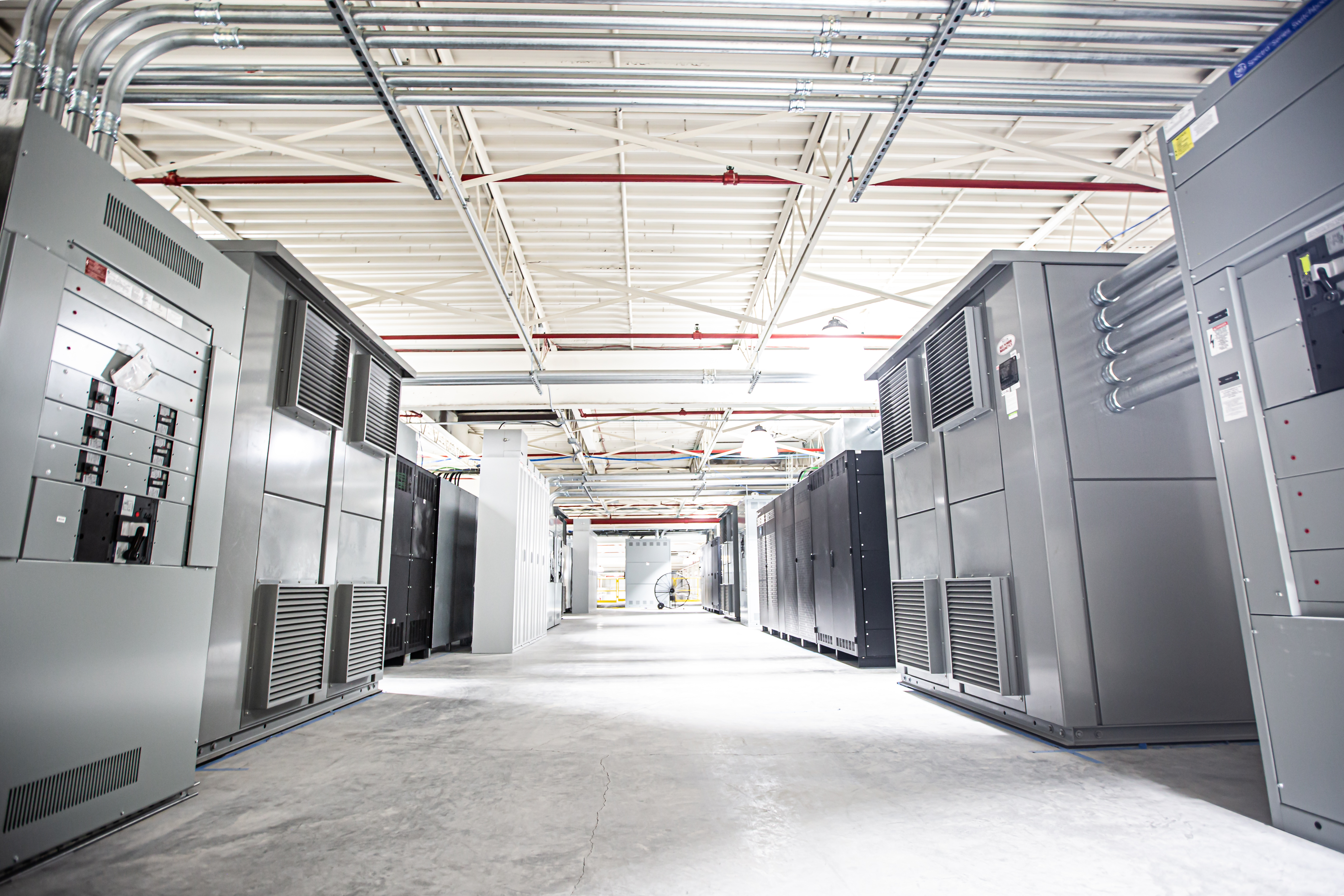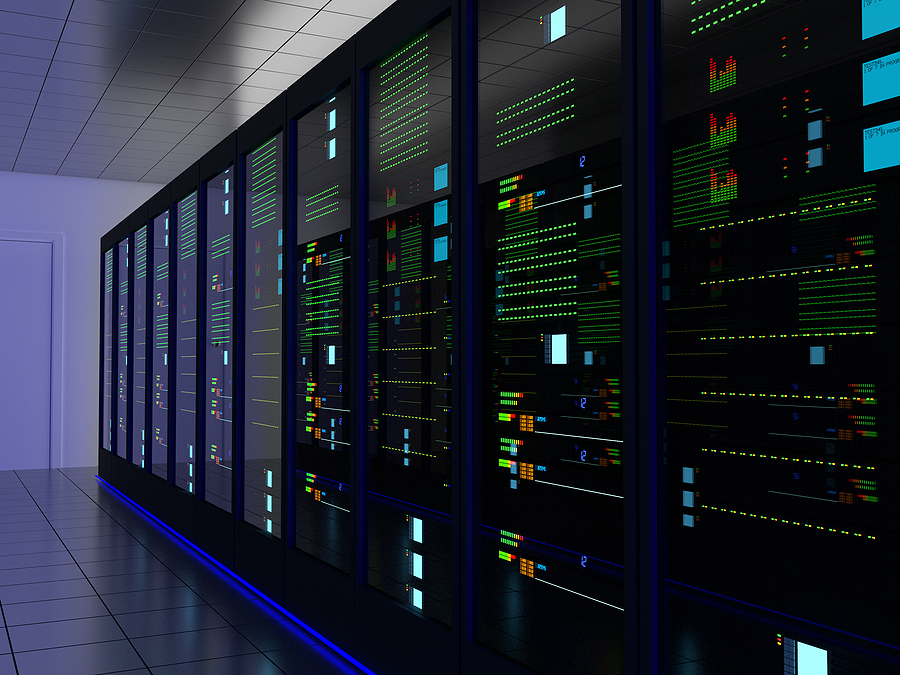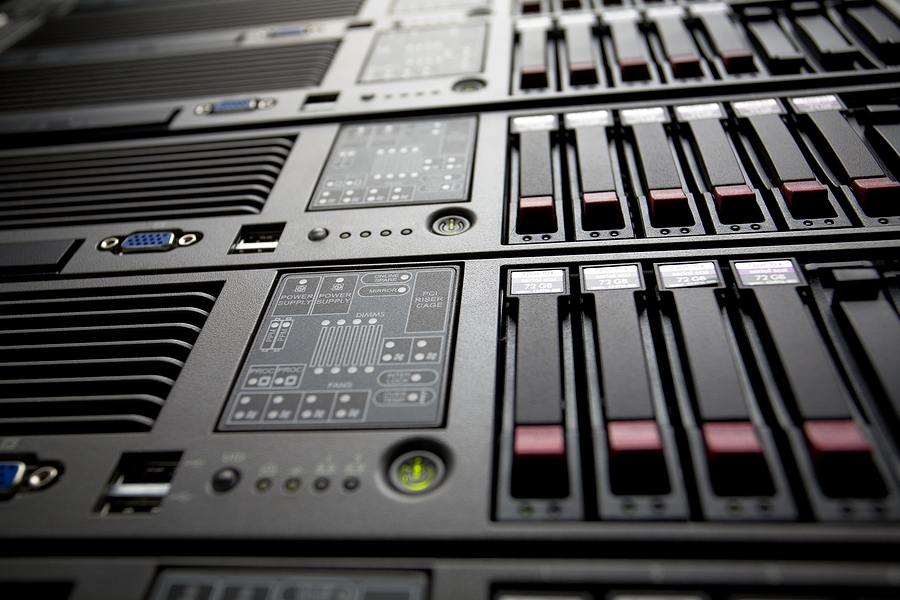Colocation Strategies for Scalable Data Centre Operations
Colocation Strategies for Scalable Data Centre Operations
Data Centre Operations: Optimising Infrastructure for Performance and Reliability
iM Critical unveils energy-efficient, modular Pittsburgh data centre campus
iM Critical is unveiling its modular Pittsburgh data centre campus. iM Critical, delivering full-stack IT services in a six nines environment, will empower High-Performance Computing (HPC) users and colocation customers in the region with demanding use cases across AI, robotics, smart cities, autonomous vehicles, academic research, smart cities and more with scalable, powerful infrastructure solutions.
The 10MW phase one campus presents a radical new standard for advanced data and computing needs, delivering cooling capabilities to support over 35kW per rack with highly efficient and sustainability-focused systems.
iM Critical’s signature and innovative modular approach enables a high level of scalability, offering a high degree of customisation for customers to meet IT goals with tailored colocation services, a deep managed service stack and high-touch support. All of this is backed by iM Critical’s experience providing flexible colocation, and the company’s commitment to sustainability across all IT infrastructure solutions.
Customer benefits at this next-generation, modular campus include:
• Low latency networks with sub-1ms metro optical rings.
• Unique network route diversity to major peering points.
• Full-stack managed IT services.
• Big Data storage.
• Onsite renewable energy source.
• Strategic location within an SBA HUBZone/IRS opportunity zone.
“We deliver an enlightened approach to IT infrastructure, providing innovative customer solutions, helping organisations reach beyond today’s technology goals for greater ease and future-proofed outcomes,” comments Michael Roark, CEO of iM Critical. “The specialised experience gained by designing, engineering, building, owning and operating data centres for over 25 years inspired and informed our factory-built, fully-integrated modular data centres, which are based on tried-and-true engineering typologies and rapid deployment principles.”
Beatrice - 27 April 2022
Colocation Strategies for Scalable Data Centre Operations
Data Centre Operations: Optimising Infrastructure for Performance and Reliability
Data Centres
Hyperscale Data Centres: Scale, Speed & Strategy
Infrastructure Management for Modern Data Centres
SUPERNAP signs PPA with WHA Utilities & Power to power its data centre
SUPERNAP will produce its own energy, and will lower its carbon footprint, leading a green approach to digital transformation, and bringing renewable energy to the digital infrastructure of Thailand.
In line with the company’s policy to help save the planet, reduce global warming and greenhouse effects, the project will also help SUPERNAP, and its clients, to reduce electricity costs significantly throughout the system’s life, while offsetting 18,250 tonnes of CO2 emission to the environment.
“SUPERNAP is the forerunner in the region since our hyperscale facility opened in 2017. Since then, our leading technology provides 100% uptime. Our commitment to provide the best digital infrastructure is once again demonstrated with this initiative towards efficiency and sustainability. WHAUP has been chosen to install the solar power system at SUPERNAP because of its expertise in engineering and safety and its solid experience in the installation of solar power systems. We are confident in the skills and professionalism of the company” says Sunita Bottse, Chief Executive Officer of SUPERNAP.
SUPERNAP has started working with WHA Utilities & Power towards the implementation of the solar panel farm. The solar farm will be built on SUPERNAP’s land on its data centre premises located in the Economic Eastern Corridor (EEC), outside the Bangkok flood zone and close to international network landing station with links across the country of Thailand.
“SUPERNAP is a Tier-IV certified data centre colocation and cloud services provider with the most advanced technology in the ASEAN region. It is driven by demand in Asia Pacific for purpose-built data centres that can guarantee performance, availability and disaster risk reduction. The growth of data and applications in the region is derived from the need to stay closer to businesses and consumers to improve customer experience using Cloud, AI, IoT and BIG Data. SUPERNAP is the leader in Asia, offering higher service capabilities than any other data centres in Southeast Asia. Having such a great company as our customer reinforces WHAUP’s position as a standard service provider of solar power systems,” comments Dr. Niphon Bundechanan, Chief Executive Officer, WHA Utilities and Power PLC (WHAUP).
The Power Purchase Agreement (PPA) includes engineering, procurement and construction (EPC), as well as an energy storage system to store excess power and reuse it when the solar energy system cannot generate enough power to satisfy the demand. Furthermore, WHAUP will be responsible for operation and maintenance of the system for 20 years. The project, which is scheduled for completion in fall of this year, began early April.
By being the first colocation and cloud data centre implementing renewable energy, SUPERNAP will contribute to the development of the green digital infrastructure of the region, supporting the national strategy to reduce greenhouse gas emissions, as well as lowering the carbon footprint of its client.
Beatrice - 22 April 2022
Colocation Strategies for Scalable Data Centre Operations
Data Centre Operations: Optimising Infrastructure for Performance and Reliability
Data Centres
News in Cloud Computing & Data Storage
Scalable Network Attached Solutions for Modern Infrastructure
Hyve colocates at Telehouse to meet demand for sustainable infrastructure
Telehouse has announced that Hyve has chosen Telehouse as one of its colocation partners to help meet growing sustainability demands. With rich connectivity delivered through a fully secure, energy-efficient and power redundant data centre, Hyve can now realise its ambitions of providing customers with long-term sustainable solutions, and easily scale for future growth.
IT and cloud providers are under increasing pressure from organisations to improve sustainability, driven by the outcomes of COP26 and new sustainability disclosure requirements (SDRs) introduced in 2021. By housing IT infrastructure to Telehouse’s London Dockland’s data centre campus, Hyve aims to improve the sustainability of its mission-critical cloud, managed security and dedicated hosting services, while still delivering the fast, reliable and flexible service customers expect.
Hyve has experienced rapid growth over the past two years, recently featuring in the 22nd annual Sunday Times Profit Track ‘Ones to Watch’ supplement. With a fast-growing customer base, and plans to accommodate future expansion, the company needed a data centre partner with global site diversity, the ability to scale quickly when needed, and maximum levels of security to ensure the safety of customers and data.
Telehouse was the colocation provider of choice due its access to 900+ connectivity partners and strong green credentials. All Telehouse London data centres are powered by 100% renewable energy procured from certified wind, solar, biomass and hydro generators and are compliant with GHG Protocol Scope 2. Telehouse also complies with international ISO standards in Environment and Energy Management, and actively participates in voluntary environmental standards, regulations and frameworks, with the company considered an ultra-small emitter under the UK Emissions Trading Scheme.
James Annetts, Infrastructure Manager at Hyve, comments: “Climate change is transforming the way we all use energy, and customers are rightly demanding greater action from their cloud hosting providers on sustainability issues. We have ambitious environmental goals and will only work with data centre providers who actively strive to make sustainability a central part of their business operations. Telehouse was the perfect choice for us, offering not only a secure and sustainable location to house our infrastructure but the flexibility and scalability we need to support our future growth.”
Tipu Ali, Account Manager at Telehouse adds: “For cloud service providers like Hyve, having a safe, sustainable and resilient data centre is critical. Customers expect the best standards in security, uptime, and latency, but more importantly, that services are delivered with minimal impact on the environment. Colocation is a key enabler in driving improvements in energy efficiency, and only those providers that put sustainability at the forefront of their operations will be well-equipped to rise to the challenges ahead.”
Beatrice - 5 April 2022
Colocation Strategies for Scalable Data Centre Operations
Data Centre Operations: Optimising Infrastructure for Performance and Reliability
Data Centres
The fast-track method to data centre scalability – pay-as-you-grow
“Pay-as-you-grow” offers potential for colocation data centre operators to grow sustainably and profitably. In this interview, ABB’s global head of data centre technology, Dave Sterlace, explains how to implement the strategy and shares a couple of examples.
What is “pay-as-you-grow”?
Demand for colocation space is growing fast as businesses recognise the benefits of outsourcing data services for better availability and flexibility. The challenge with managing this is how to do it efficiently – and this is what pay-as-you-grow does.
Rather than
having to make large up-front investments in a new site, pay-as-you-grow is
designed so that new capacity can be installed little and often. This improves
affordability as operators can secure tenants earlier and use the income to
invest in their next infrastructure build phase.
Pay-as-you-grow
uses scalable and modular solutions to provide a consistent, efficient, and
cost-efficient way to meet demand.
Data centre
designers, operators, and stakeholders can benefit from benefits including
faster deployment, improved reliability, reduced capital costs, and higher
energy efficiency.
How quickly
can new capacity be added?
Data centre operators want to deploy new infrastructure fast. In 2010, two-year build times were typical. However, according to a survey in 2020, 39% of industry professionals expect to see new capacity rolled out in less than a year and 66% in less than 18 months.
One example is
US operator GIGA. It delivered the first phase of a new centre in North
Carolina in less than six months and with an ultra-low Power Usage
Effectiveness (PUE) of 1.15. This is enabling it to save energy and minimise the
operating costs of its 60 MW facility.
It called on
ABB as a design partner to deliver a packaged power solution. The approach is
based on a ‘system plus system’ arrangement and features two types of UPS
system to provide flexibility and scalability.
The first
supports customer IT loads and is the site’s existing TLE UPS. It is integrated
with lithium-ion (Li-ion) batteries, which are lightweight and compact. These
are particularly important in this case as the UPS is installed on a mezzanine
level that has space and load-carrying limits. The Li-ion batteries also help
to reduce energy demand as they can run at higher temperatures, reducing the
cooling requirements.
GIGA is its
second UPS to support network servers. It is based on the decentralised parallel
architecture (DPA) approach. It meets the operator’s requirement for a
low-power system and scalable deployment, enabling GIGA to expand its facility
in 2 MW blocks.
What
challenges are there and how can operators avoid them?
It might sound
obvious but if you have a pay-as-you-grow strategy, you need systems that are
designed for scalability and flexibility from the start. This will avoid cost
and time delays when rolling out future expansions.
One operator
that has used this approach is Volico in Florida. It wanted its FLL1 Tier IV
colocation data centre to have excellent availability and reliability, as well
as providing dedicated server space for customers.
During
construction, it found that the original proposed UPS was not scalable and
approached ABB for advice.
We suggested
switching to a modular DPA UPS with the capability of scaling up in 100 kW
increments. This type of UPS can be scaled vertically in increments of 100 kW
up to 500 kW in a single frame, and horizontally in up to six parallel frames
for a total of 3 MW.
It supports Volico’s 'six-nines' principle of 99.9999% availability. It also has the additional benefits of high energy efficiency, and hot-swappability so that maintenance can be performed on a module while the rest of the system is live.
What are
the design considerations for pay-as-you-grow?
Four key
considerations must be taken into account when planning and implementing a pay
as you grow strategy. These are: choice of electrical topology, equipment
scalability, digitalisation, and modular deployment.
System
topology is the first choice and depends on how much redundancy the operator
wants. System plus system topology provides the highest level of redundancy but
is the most costly as it uses two independent systems to supply the load. At
the other end of the scale, block redundant topology makes the most efficient
use of electrical infrastructure as it automatically switches critical loads to
a reserve or catcher system if the original supply fails.
Shared
redundant topology is a compromise between the two. It uses N+1 UPS systems to
share backup capacity across N loads.
Next, it’s
essential to specify equipment scalability. For example, by choosing
gas-insulated switchgear (GIS), UPS, power distribution units (PDU), and remote
power panels (RPP) that are capable of scalability. A modular UPS based on
decentralised parallel architecture (DPA) enables scalability while also
delivering continuous power availability during maintenance and expansion, and
has a lower upfront investment.
Digitalisation
– adding intelligence to your electrical equipment – can improve simplicity and
enhance scalability as uses a single fiber optic communication bus instead of
many point-to-point copper wire connections. The result is that it’s possible
to reduce wiring by up to 90%, saving installation time when adding new phases.
Finally,
modular systems that are pre-engineered, prefabricated, and pretested packages
such as skid units and ehouses can accelerate construction times while reducing
risk through consistency.
Ultimately,
the technology exists to support pay-as-you-grow for your chosen topology. It’s
a matter of specifying equipment that is designed for scalability to support
the strategy.
Beatrice - 26 January 2022
Colocation Strategies for Scalable Data Centre Operations
Data Centre Operations: Optimising Infrastructure for Performance and Reliability
Data Centres
BBT selects MCFI to build first colocation data centre in Permian Basin
Mission Critical Facilities International (MCFI) has announced that it has deployed its GENIUS Modular Data Centre in Midland, Texas. BBT selected the MCFI GENIUS Modular Data Centre solution to provide energy efficient and reliable IT infrastructure to improve communications and safety in the oilfields and the surrounding digitally underserved communities of West Texas.
MCFI’S GENIUS Modular Data Centre for BBT is the first colocation facility in the Permian Basin. The data centre, which is now open and serving customers, is master-planned for a total of 440 racks, 5MW of critical power, and scalable MMR supporting up to 30 fibre carriers. The initial phase has deployed 1MW of delivered power and 88 racks and is designed to scale along with the demand to manage capital outlay.
The GENIUS Modular Data Centre is a pre-designed/pre-engineered data centre solution that leverages the benefits of containerised data centres with an impressive speed to market, going from pad to operation in as little as five to eight months. It also delivers maximum leasable space and a life expectancy of over 30 years with significant cost savings to customers.
“We’re excited to bring our GENIUS Modular Data Centres to the Permian Basin,” says Patrick Giangrosso, Vice President at MCFI. “We are committed to providing innovative, sustainable, cost-effective, and quick-to-deploy infrastructure solutions with the economics and flexibility of a stick-built data centre for edge or colocation providers. Our partnership with BBT is pioneering change in critical communications at the edge for West Texas oil and gas industries.”
The BBT data centre location will serve as the aggregation point for communication services in the Permian Basin with improved connectivity at oil and gas wellheads, providing live views with augmented reality to reduce traffic and enhance work safety and communications in the oilfields. Emergency services and businesses in West Texas can also access a more robust IT infrastructure with disaster recovery solutions to protect critical communications.
“This is BBT’s first data centre and it is a success because of the expertise and guidance from the MCFI team,” says Neville Haynes, Vice President of Data Centre Operations at BBT. “MCFI deployed within our accelerated timeline, pivoted quickly, and accommodated our anchor tenant requests while overcoming challenges related to permitting, construction, the pandemic, severe weather and supply chains. MCFI handled the entire process perfectly.”
Beatrice - 18 January 2022
Colocation Strategies for Scalable Data Centre Operations
Data Centre Operations: Optimising Infrastructure for Performance and Reliability
Data Centres
Ficolo to support advanced, high performance computing installation
Ficolo has announced it will provide colocation services for a high density supercomputing infrastructure platform at Ficolo’s The Air Data Centre in Helsinki for one of the largest technology companies in the US. This brings an exceptional level of security to, and supports the platform, which enables users to secure and scale unique cutting-edge services for innovation.
“After evaluation of the major providers in the region, we were selected for this undertaking due to The Air’s ingenuity and climate friendly design,” says Ficolo CEO Seppo Ihalainen. “That, combined with the cool climate and well-connected Nordic location, positioned Ficolo as the ideal candidate to provide colocation services for this platform. Additionally, our team is always prepared to move quickly and meet the specific needs of each customer, which allows us to accommodate the unique requirements this project requires.”
Ficolo The Air utilizes the latest technological innovations in
cooling, active fire protection, heat reuse and flexible power distribution.
Combined energy and cooling cells (CECC) offer an energy efficient and low PUE
solution. The data center’s UPS system and generators guarantee an
uninterrupted power supply, and the cell-based design allows adaptive
scalability as CECC units can be fitted as the capacity grows. This allows
providing a mix of services for different types of customers from the same
whitespace.
A leader in sustainability, Ficolo is the first and only data
center company to be Dark Green rated — the highest rating awarded by Norwegian
climate research institute, Cicero. The dark green rating is allocated to
projects that correspond to the long-term vision of a low carbon and climate
resilient future and was awarded to Ficolo in conjunction with raising a Green
Bond in 2019.
“Traditional data centers don’t provide the level of flexibility to fulfill today’s requirements for sustainability, speed, versatility and cost-efficiency, but we’re continuously looking for ways to improve,” says Ficolo CEO Seppo Ihalainen. “We also have the advantage of the cool Finnish climate, which helps us provide the most cost-effective, innovative and sustainable service. We look forward to delivering that promise in this venture and in the future to hyperscalers around the world.”
Ficolo concentrates entirely on data center and cloud
infrastructure services, allowing customers to focus on core initiatives and
expand infrastructure to fit growth requirements. Ficolo’s data centers offer
ISO 27001, ISO 22301 and PCI DSS certified services for HPC, wholesale and
hyperscale operations.
Beatrice - 17 January 2022
Colocation Strategies for Scalable Data Centre Operations
Data Centre Operations: Optimising Infrastructure for Performance and Reliability
Data Centres
Sustainable IT: Building a sustainable enterprise with colocation
Carolina Uribe, Energy and Environmental Manager at Telehouse explains why more and more organisations are opting for colocation to improve their sustainability
When stakeholders start asking questions about
environmental, social and governance issues, corporate directors need to have
the right answers. And for this reason, sustainability has become a top
business issue.
Consumers, businesses, employees and investors are increasingly choosing only to work and do business with companies that support the transition to the low-carbon economy and address climate change, putting pressure on organisations to improve their carbon credentials and disclosures. According to Telehouse research, reducing environmental footprint is now a top five challenge for IT decision makers and will be the second biggest challenge by 2030.
As businesses embark on digital transformation journeys
and worldwide data traffic continues to grow exponentially, so too will demand
for power. Businesses will come under increasing scrutiny and be subject to
ever stricter regulatory requirements to measure and report on CO2 emissions and
plans to decarbonise. Meanwhile, the data centre industry is making great
strides to implement and promote more sustainable practices. optimising space and
implementing energy efficiency solutions. As a result, more and more enterprises
are turning to colocation services as the answer to improving their carbon footprint.
How the data centre industry is responding
With external and internal pressures to
improve their green credentials, the data centre industry is working hard to
reduce its environmental impact. Traditionally,
it has been subject to criticism about the amount of power it consumes, and the
type of electricity sources used to power its operations. However, many providers are now developing
their own internal environmental and energy efficiency strategies and policies
to drive improvements.
Many data centres also demonstrate best practice in
energy efficiency by adopting appropriate international ISO standards in
Environment and Energy management (ISO 14001:2015 & ISO 50001:2018). They
are also measuring and reporting energy use and efficiency through the CDP
(Carbon Disclosure Project) or equivalents, contractually through the Climate
Change Agreements. Some are doing this by obligation through regulatory schemes
such as EU ETS (EU Emissions Trading Scheme which captures Scope 1 emissions),
ESOS (Energy Saving Opportunities Scheme) and SECR (Streamlined Energy and
Carbon Reporting).
The most sustainable data centres are now being built on
commitments to innovative renewable strategies, including green power, water
reclamation, zero water cooling systems, recycling and waste management, and
more. They remove inactive or underused servers, and take advantage of newer,
more efficient technologies. As a result, organisations are optimistic
about the EU Commission’s vision of data centres becoming climate neutral by 2030
but recognise that there many challenges ahead to achieve this goal.
Choosing a green data centre provider
According to our research, the majority of IT decision-makers (86%) say sustainability is important in their IT infrastructure decision-making process and 62% are already monitoring the environmental footprint of their IT operations.
Furthermore, 82% say it is vital that their organisation
uses data centres powered by renewable energy again. However, when it comes to
choosing a data centre supplier, security (50%) and cost (41%) take priority,
with sustainability (26%) on the backburner. This is likely because renewable
energy is now a given and IT leaders are looking towards data centres to do
more to demonstrate energy efficiency measures.
While great strides are being made in the industry to
reduce energy consumption and improve sustainability, not all data centres are
equal. So, when choosing a new data centre partner, IT leaders consider what
climate actions their potential partners are taking as part of initial
assessments.
As well as the data centre providers’ commitments to
improving carbon efficiency, an often-overlooked area of sustainability is
cloud connectivity. With many enterprises shifting to a hybrid and multi-cloud
approach, choosing a data centre that offers that ability to connect to multiple cloud services
easily and securely through a single, dedicated private connection is critical.
Innovations in power or artificial intelligence can also
help drive improvements. Most data centre control systems already use AI to an extent to
control and improve energy efficiency effectively. For example, an
uninterruptable power supply can automatically change from one efficiency mode
to another depending on the load of the system, however, machine learning can
also be used to predict these events dependant on a number of other factors
(e.g. external ambient temperatures) so the control systems can react
accordingly and automatically.
Achieving a greener future
To meet growing corporate and social responsibility demands
organisations increasingly need to make procurement decisions based on
environmental sustainability. For years the IT industry and sustainability have
been at odds. However, through technological advancements such as AI, the
future is being changed and shaped for the better.
At the same time, those designing, building, and
operating data centres will continue to incorporate technical considerations
across a range of on-site power generation and energy storage solutions to practically
address greenhouse emissions abatement, evolving regulatory requirements and
end-user performance requirements, while also taking full advantage of
renewable energy sources and sustainable technologies.
During the last decade a lot of data has been collected
and analysed, providing more clarity on how a load grows within a building.
This has allowed operators to build infrastructure that is designed and then
tailored to those growth patterns. And with better cooling systems and UPS
technology, heat and server recycling projects, any new data centre can be
efficient from day one despite being built for a 30-year lifespan.
Over the coming years, we will see more joint
commitments and climate change projects emerging as businesses try to address
government commitments to Net Zero. The journey is only beginning, and it will
be colocation providers who have the opportunity to put sustainability agenda
at the forefront of their operations and strategies.
DCNN staff - 10 January 2022
Colocation Strategies for Scalable Data Centre Operations
Data Centre Operations: Optimising Infrastructure for Performance and Reliability
Data Centres
A consultative approach to high performance colocation services
atNorth is a leading Nordic data centre services organization based in Reykjavik, Iceland. It offers environmentally responsible, power-efficient, and cost-optimized data centre hosting facilities, with the capabilities to deliver high-performance computing (HPC) services.
By working with Subzero Engineering the company was able to standardize its approach to HPC colocation; using a scalable, energy efficient, and ultra-secure, fault-tolerant cold aisle containment (CAC) methodology to replicate its sustainability and performance capabilities across multiple sites.
CUSTOMER
BACKGROUND
atNorth is a leading Nordic data centre services company offering environmentally sustainable, power-efficient, and cost-optimized data centre hosting facilities. Its Tier III, redundant design and its innovative ability to support rack densities ranging from 40kW – 100kW make it the perfect partner for organizations using high-performance computing (HPC) to solve some of the world’s most challenging problems.
With operations in Stockholm, Sweden and Reykjavik, Iceland, the company’s mission is to offer more compute for a better world, leveraging innovative data centre designs, power efficiency, and intelligent clusters to support the disruptive technologies used by customers. This includes workloads that require High Performance Computing (HPC) infrastructure, such as simulations, scientific calculations, artificial intelligence (AI), deep learning, and blockchain applications.
At its Icelandic Thor DC and Mjölnir DC colocation campuses, the company continues to push the boundaries of Nordic data centres; using 100% renewable energy resources from hydropower and geothermal sources to power their facilities, which are optimized for ultra-energy efficiency, maximum reliability, and industry-leading performance.
With this approach that incorporates Direct Free Air cooling and carbon-free energy, atNorth delivers a Power Usage Effectiveness (PUE) rating below 1.2 at its Tier III Mjölnir DC. A strategy that offers customers a reduced total cost of ownership (TCO), increased operational and energy efficiency, and a secure, scalable data centre platform to protect the long-term lifecycle requirements of their infrastructure deployments.
CHALLENGES
When designing its second 80MW, Mjölnir DC data centre campus in Reykjanesbaer, Iceland, atNorth was looking for a containment partner that was able to deliver to demanding timescales.
The company required a high-quality,
robust, and secure containment solution that would offer the ability to
standardize their design, while delivering repeatable performance,
sustainability, and efficiency capabilities across multiple sites.
Further, due to its reputation
for sustainable HPC and colocation, and for building long-term customer
relationships, the company was looking to establish a new supply chain partner
who could work with them as the company grew.
PROPOSED
SOLUTION
Working to meet the company’s requirements for speed, efficiency, and precision, Subzero Engineering quickly engaged with Jóhann Þór Jónsson, atNorth’s Director Project Management and Business Development. Rather than offer a simple proposal containing a product specification and cost, the companies’ engineers provided consultative expertise from a remote location in the USA, offering valuable insight that would help to future-proof the data centre and meet growing customer demand.
Once a relationship was established, Subzero specified its Essential Plus+ product line, offering a vendor-neutral, quick-to-deploy, and flexible containment system. Available globally, the Essential Plus+ products would provide atNorth with a standardized containment architecture, which would accommodate any customers’ HPC rack, server, or storage requirement.
“Subzero’s response time was exceptional,” says Jóhann Þór Jónsson, Director Project Management and Business Development, atNorth. “They not only specified a cold aisle containment architecture complete with security doors and top roofs, but worked with us consultatively to engineer a robust, clean, and energy efficient system that would look visually impactful and fit with the site’s geothermal surroundings.”
RESULTS
The sleek look and feel, best-in-class materials, and energy efficient architecture of the Essential Plus+ products met atNorth’s requirements for a customizable, robust and high-quality containment solution. Moreover, it would enable them to standardize and quickly scale across new sites, using a methodology that delivers increased security, performance, and sustainability. This is a pivotal approach, and has informed the design, construction and development of its third climate-positive data centre in Stockholm.
“Subzero Engineering has given us a standardized, repeatable, and physically secure containment system, which fits well with our own philosophy,” comments Jóhann Þór Jónsson, Director Project Management and Business Development, atNorth. “They have offered us a flexible containment solution, focused on both performance and efficiency, but which is easy to customize with the changing requirements of our intensive computing customers.”
Further, the synergies between the companies were clear from the outset, both having values ingrained with pushing the boundaries of performance, sustainability, and energy efficiency. Subzero’s containment solutions would not only contribute towards atNorth’s industry-leading low PUE, but their approach would deliver exceptional value: establishing them as a long-term partner for the company’s high performance, sustainable, colocation services. “As a business, we’re always focused on the long-term objectives of our customers, and we choose to work with companies whose values are aligned with ours,” continues Jóhann Þór Jónsson, Director Project Management and Business Development, atNorth. “Subzero Engineering remained service-minded, agile, and worked to truly understand our business: providing a consultative, value-add and intricate data centre solution that meets our demands for performance and efficiency both now, and in the future.”
Beatrice - 12 November 2021
Colocation Strategies for Scalable Data Centre Operations
Data Centre Operations: Optimising Infrastructure for Performance and Reliability
Data Centres
Infrastructure Management for Modern Data Centres
DAMAC and Dataplex partner to develop data centre facilities in Europe
DAMAC Group has entered a partnership with Dataplex Group. The partnership will focus on brownfield projects involving retrofitting existing structures and larger greenfield projects, with specific focus on hyperscale and wholesale colocation customers.
DAMAC Group has also invested in Dataplex, which will result in a
shareholding of up to 45% of the company over time. Dataplex’s primary
shareholders DAMAC Group and Chirisa have acquired a land parcel in Abbotstown
for a greenfield 70 MW+ data centre and industrial campus development in
Dublin, Ireland.
The DAMAC Group of companies is the private investment arm of Hussain Sajwani, the Dubai-based billionaire known for his successful global property development company, DAMAC Properties. The group has a diverse portfolio across various sectors including real estate, capital markets, fashion, and more. Earlier this year, DAMAC Group made its foray into the data centre industry by launching Edgnex, a global digital infrastructure company headquartered in Dubai.
“DAMAC Group, through its global digital infrastructure company Edgnex, is developing data centre facilities to support the growth of digital economies across the globe. Our work with Dataplex enables us to serve exponential demand coming from local markets, driven by rapid digital transformation, booming digital economies, and growing internet users,” says Hussain Sajwani.
Edgnex, a global digital infrastructure provider, identifies and
invests in the next digital hubs and aims to disrupt the local data centre
market. Over the coming months, Edgnex will be announcing acquisitions,
building projects and partnerships focused on developing local data centre
facilities in emerging or underserved markets globally. Its mission is to bring
new speed and agility to the data centre market so that more local and regional
economies, enterprises and end users can benefit from
digital infrastructure.
“We have a track record of recognising opportunities, making significant investments and capturing a first mover advantage. We are driven by market dynamics, not just by who needs capacity now. Where we go, others follow,” Sajwani adds.
DAMAC Group’s footprint extends across the Middle East with projects in the UAE, Saudi Arabia, Qatar, Jordan, Lebanon and Iraq. Its success has allowed the company to expand global presence to places such as Canada, the Maldives, Italy and the UK.
“DAMAC Group has a unique vision for the data centre market, and we look forward to helping it to bring its disruptive model to more cities around the world. Together with DAMAC Group, we can deliver digital infrastructure in underserved markets and support the growth of local digital economies,” comments Eddie Kilbane, co-founder and CEO of Dataplex Group. “Our partnership will enable our organisations to grow together, and it will be great to work with the team at DAMAC Group.”
Beatrice - 20 October 2021
Colocation Strategies for Scalable Data Centre Operations
Data Centre Operations: Optimising Infrastructure for Performance and Reliability
Data Centres
The Norwegian data centre market is set to grow by 100MW by 2024
The Norwegian leased data centre market is set to grow by nearly 100MW by 2024, according to a new report released by CBRE Data Centre Solutions Consulting. That would take total market supply to 216MW for both retail and wholesale colocation.
The
surge in new supply is due to a number of factors that are unique to Norway’s
data centre offering. The market continues to be driven by enterprise and cloud
deployments with companies benefitting from access to renewable and low-cost
energy supply.
Many
of the deployments include high-density use cases such as artificial
intelligence (AI) compute and high-performance computing (HPC) which require
large amounts of processing equipment and power. In a number of cases companies
are able to move these functions where they don’t involve sensitive data into
lower-cost locations and this is driving international interest in the market.
The
Norwegian leased data centre market saw 36MW of take-up in the last two years.
Companies taking data centre supply included Microsoft which has deployed an
availability zone to serve the Nordics. Many other hyperscalers are showing
continued interest in the market, however, are yet to fully deploy their own
offering.
The market is currently being driven by larger deals, with the wholesale colocation market accounting for 83% of take-up and CBRE predicts it will reach above 90% in 2024 to 100MW.
The
market has also seen healthy growth in leased data centre supply. The majority
of the activity is centred around Oslo, where low latency connectivity is best
served. Other HPC environments are located outside of the city where land is
widely available alongside good power provision.
CBRE EMEA Data Centre Solutions Consulting Analyst Henry Gray says the industry continues to see large scale deployments, particularly from European businesses that are able to decentralise parts of their operation.
“Historical latency issues are becoming less of a constraint and the continued investments from data centre operators is placing Norway in an extremely competitive position with neighbouring markets,” Gray comments.
“Power
is still the main attraction to the market where cost saving and environmental,
sustainability and governance (ESG) targets can be met with ease. Our figures
are just starting to tell the story of the real importance of green energy in
the data centre industry.”
Beatrice - 28 July 2021

Head office & Accounts:
Suite 14, 6-8 Revenge Road, Lordswood
Kent ME5 8UD
T: +44 (0)1634 673163
F: +44 (0)1634 673173









